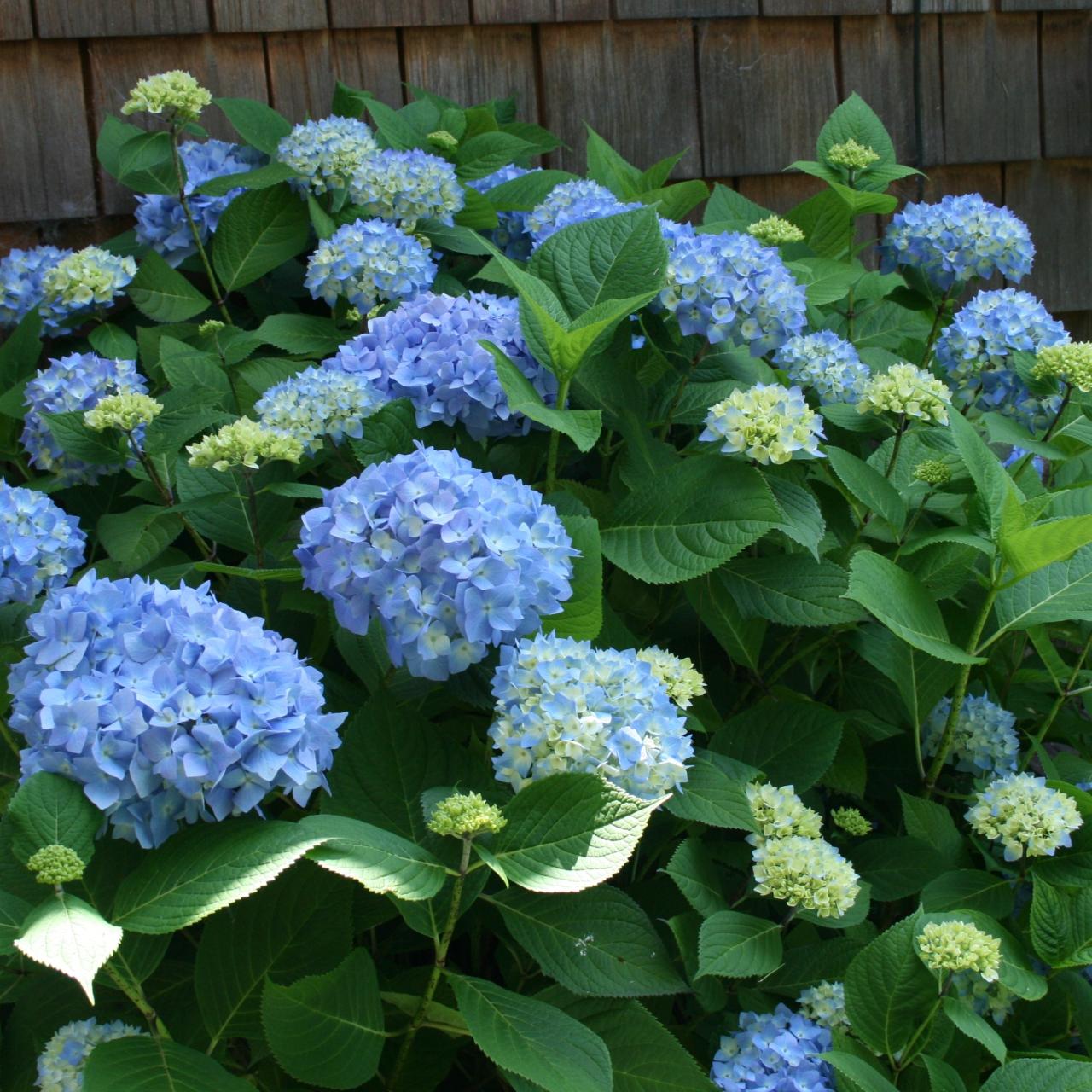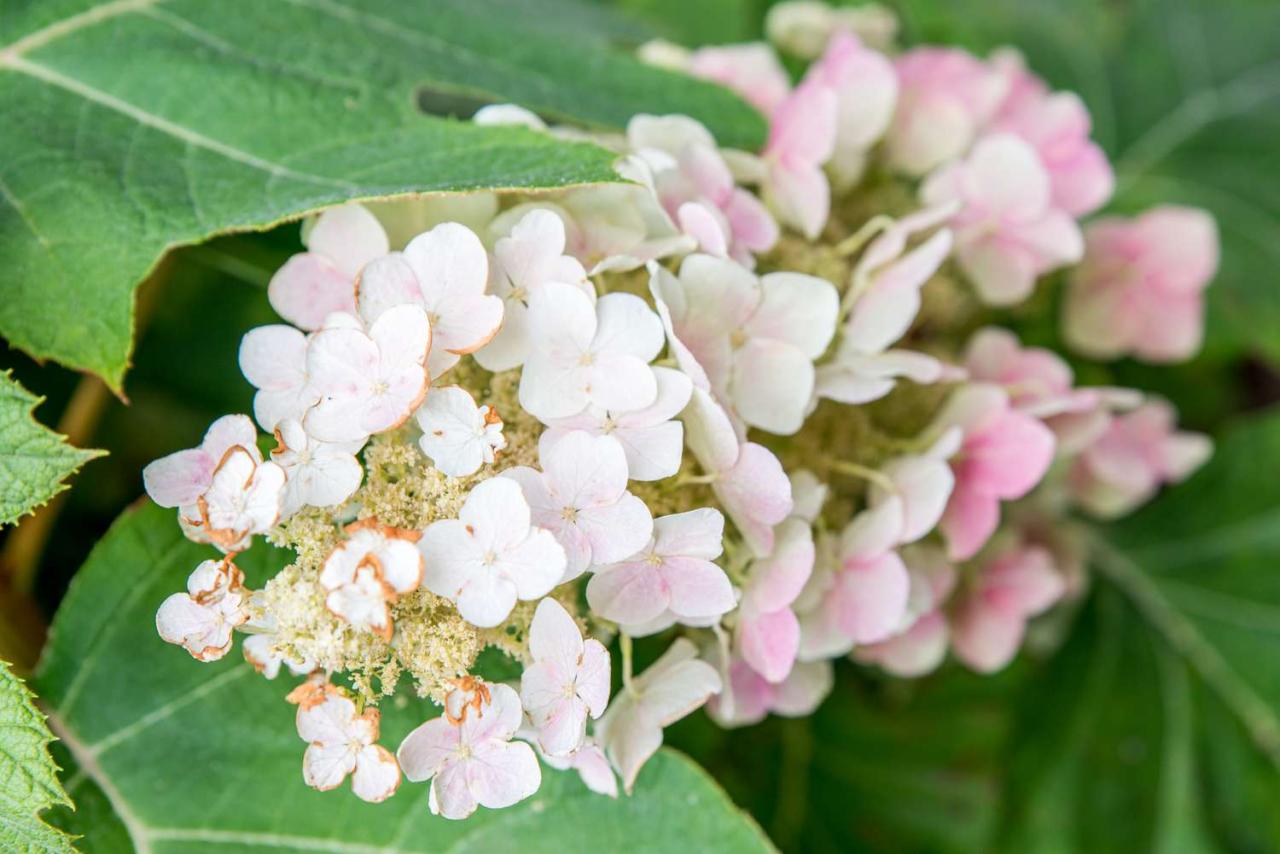Best Shade Trees to Plant With Hydrangeas: A harmonious landscape design often involves finding the perfect companions for your favorite plants. Hydrangeas, with their stunning blooms and vibrant foliage, are a popular choice, but they thrive in dappled shade.
Selecting the right shade trees can create a thriving oasis for both hydrangeas and your garden’s overall aesthetic. This guide explores the best shade trees to plant alongside hydrangeas, considering their light requirements, root systems, and the overall impact on your garden’s beauty.
Understanding hydrangeas’ needs is crucial for successful planting. These popular flowering shrubs prefer moist, well-drained soil and thrive in partial shade. While many varieties tolerate full sun, they often produce larger blooms and vibrant colors in a shaded environment. Selecting the right shade tree is key to creating a thriving microclimate for your hydrangeas, ensuring they receive the optimal amount of sunlight, water, and nutrients.
Understanding Hydrangea Needs

Hydrangeas are known for their vibrant blooms and lush foliage, but they require specific growing conditions to thrive. Understanding these needs is crucial for ensuring your hydrangeas flourish and produce beautiful flowers.
Light Requirements, Best Shade Trees to Plant With Hydrangeas
Hydrangeas prefer a location that receives dappled sunlight, meaning they benefit from some shade during the hottest parts of the day. Direct sunlight, especially during the afternoon, can scorch the leaves and reduce flower production. Ideal conditions include morning sun and afternoon shade, or filtered light throughout the day.
Soil Preferences
Hydrangeas thrive in slightly acidic soil with a pH between 5.5 and 6.5. This soil type allows them to absorb essential nutrients, particularly iron, which is crucial for healthy growth and vibrant flower colors. If your soil is too alkaline, you can amend it with acidic materials like peat moss, pine needles, or sulfur.
Water Needs
Hydrangeas are moisture-loving plants and require consistent watering, especially during dry periods. The soil should be kept consistently moist, but not soggy. Overwatering can lead to root rot, so ensure the soil has good drainage. Mulching around the base of the plant helps retain moisture and regulate soil temperature.
Variety-Specific Needs
While hydrangeas share general growing preferences, certain varieties have unique needs. For example, bigleaf hydrangeas (Hydrangea macrophylla) are known for their large, showy blooms and thrive in slightly acidic soil. On the other hand, oakleaf hydrangeas (Hydrangea quercifolia) prefer well-drained soil and can tolerate more sunlight.
Researching the specific needs of your hydrangea variety ensures you provide optimal care.
Common Pests and Diseases
Hydrangeas are susceptible to various pests and diseases. Common pests include aphids, spider mites, and Japanese beetles, which can damage leaves and flowers. Diseases like powdery mildew and leaf spot can also affect their health. Regular inspection and prompt treatment with appropriate pesticides or fungicides can help control these issues.
Selecting Shade Trees for Compatibility: Best Shade Trees To Plant With Hydrangeas
Choosing the right shade trees for your hydrangeas is crucial for their well-being. Hydrangeas thrive in partial shade, and selecting trees that provide dappled sunlight while respecting the needs of both plants is essential. Consider the following factors when choosing shade trees for your hydrangeas.
Root Systems and Their Impact on Hydrangeas
The root systems of shade trees can significantly impact the growth of hydrangeas. Some trees have aggressive root systems that can compete with hydrangeas for water and nutrients, while others have more shallow roots that are less likely to interfere.
- Trees with shallow root systems:These trees are generally a better choice for planting near hydrangeas. Examples include:
- Dogwood ( Cornus florida)
- Redbud ( Cercis canadensis)
- Serviceberry ( Amelanchierspecies)
- Trees with deep root systems:These trees may be more challenging to plant near hydrangeas, as their roots can compete for resources. Examples include:
- Oak ( Quercusspecies)
- Maple ( Acerspecies)
- Elm ( Ulmusspecies)
Leaf Litter and Its Effect on Hydrangea Growth
Leaf litter from shade trees can affect hydrangea growth in several ways. Some trees produce leaf litter that is beneficial to hydrangeas, while others can create challenges.
- Beneficial leaf litter:Leaf litter from trees like oak and maple can decompose and add valuable nutrients to the soil, benefiting hydrangea growth.
- Problematic leaf litter:Leaf litter from trees like pine and spruce can be acidic, which can make the soil too acidic for hydrangeas. This can lead to nutrient deficiencies and poor growth.
Designing a Balanced Landscape

Creating a harmonious landscape that showcases both the beauty of hydrangeas and the graceful presence of shade trees requires careful planning. This involves considering the visual balance, ensuring proper sunlight exposure for both plants, and understanding their growth habits. A well-designed landscape will not only enhance the aesthetics but also promote the health and longevity of both hydrangeas and shade trees.
Visualizing a Balanced Landscape
Imagine a landscape where a majestic oak tree stands tall, its branches casting dappled sunlight on a bed of vibrant hydrangeas. The hydrangeas, with their lush foliage and colorful blooms, create a vibrant contrast against the tree’s sturdy trunk and textured bark.
The oak’s canopy provides ample shade for the hydrangeas, protecting them from the harsh summer sun, while the hydrangeas, with their delicate blooms, add a touch of softness and color to the landscape.
Matching Shade Trees and Hydrangea Varieties
Choosing the right shade tree for your hydrangeas is crucial for creating a balanced landscape. The shade tree should not only provide adequate shade but also complement the color and texture of the hydrangeas. Here’s a table illustrating some shade tree and hydrangea combinations:
Shade Tree |
Hydrangea Variety |
Benefits |
Considerations |
|---|---|---|---|
American Elm (Ulmus americana) |
Annabelle Hydrangea (Hydrangea arborescens) |
Provides a large, spreading canopy for ample shade, while the elm’s delicate leaves complement the Annabelle’s large, white flower heads. |
American elms are susceptible to Dutch elm disease, so consider disease-resistant varieties. |
Red Maple (Acer rubrum) |
Endless Summer Hydrangea (Hydrangea macrophylla) |
The red maple’s brilliant fall foliage provides a stunning backdrop for the Endless Summer’s vibrant pink or blue blooms. |
Red maples can be messy with falling leaves and seeds. |
Japanese Stewartia (Stewartia pseudocamellia) |
Oakleaf Hydrangea (Hydrangea quercifolia) |
The stewartia’s delicate, peeling bark and beautiful fall foliage create a captivating contrast with the oakleaf hydrangea’s large, textured leaves. |
Japanese stewartia prefers acidic soil, similar to hydrangeas. |
River Birch (Betula nigra) |
Pee Gee Hydrangea (Hydrangea paniculata) |
The river birch’s graceful, peeling bark and airy canopy complement the Pee Gee hydrangea’s large, cone-shaped flower heads. |
River birch can be susceptible to bronze birch borer, so consider resistant varieties. |
Planting and Maintenance Considerations
Successfully integrating hydrangeas and shade trees into your landscape requires thoughtful planting and ongoing care. By understanding the optimal conditions for each plant, you can ensure they thrive and create a harmonious, vibrant space.
Timing of Planting
The best time to plant hydrangeas and shade trees is during the early fall or late spring. This period provides ideal soil temperatures and moisture levels, allowing the plants to establish their root systems before the harsh summer heat or cold winter temperatures arrive.
Spacing Considerations
Proper spacing is crucial for the healthy growth of both hydrangeas and shade trees. It allows for adequate airflow, sunlight penetration, and root development.
- Hydrangeas:Space hydrangeas 3-5 feet apart, depending on the variety. This ensures sufficient room for their foliage to spread and flourish.
- Shade Trees:The spacing for shade trees varies greatly depending on the mature size of the tree. Consult the specific tree’s care information for recommended spacing. However, as a general rule, allow 15-25 feet between shade trees and hydrangeas to prevent competition for resources.
Maintenance Practices
Regular maintenance is essential for keeping both hydrangeas and shade trees healthy and vibrant. Here is a step-by-step guide:
- Watering:Hydrangeas and shade trees require consistent watering, especially during the first year after planting. Deeply water the plants every 1-2 weeks, depending on the weather and soil conditions. Ensure the soil is consistently moist but not soggy.
- Fertilizing:Hydrangeas benefit from regular fertilization, particularly during the spring and summer months. Use a balanced fertilizer specifically formulated for flowering shrubs. Shade trees may require less frequent fertilization, but it is essential to follow the specific care instructions for the chosen tree species.
- Pruning:Hydrangeas require regular pruning to maintain their shape and encourage healthy growth. Prune them in late winter or early spring, before new growth emerges. Shade trees may require pruning to remove dead or diseased branches, or to shape the canopy.
Consult the tree’s care information for specific pruning guidelines.
- Pest and Disease Control:Monitor your hydrangeas and shade trees for signs of pests or diseases. Use organic pest control methods, such as insecticidal soap or neem oil, if necessary. Consult with a local gardening expert or certified arborist for professional advice and treatment options.
Ultimate Conclusion
By carefully selecting shade trees that complement the needs of your hydrangeas, you can create a flourishing landscape that is both beautiful and functional. Remember to consider factors such as light requirements, root systems, and the aesthetic appeal of both the shade tree and the hydrangea variety.
With a little planning and attention to detail, you can enjoy a thriving garden where hydrangeas and shade trees thrive together in harmony.
Quick FAQs
What are the best shade trees for hydrangeas in a small garden?
Smaller shade trees like Japanese maples, dogwoods, or serviceberry trees are ideal for smaller gardens. They provide dappled shade and complement hydrangeas beautifully.
Can I plant hydrangeas under a large oak tree?
While oaks provide excellent shade, their extensive root systems can compete with hydrangeas for water and nutrients. Consider planting hydrangeas further away from the oak or using a different shade tree.
How often should I water hydrangeas planted under a shade tree?
Hydrangeas require regular watering, especially during dry spells. Water deeply and consistently, ensuring the soil remains moist but not waterlogged.

